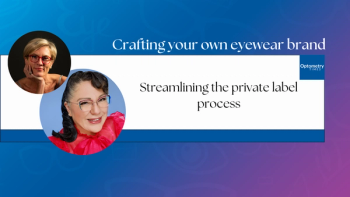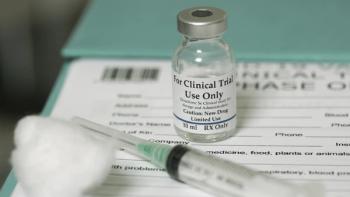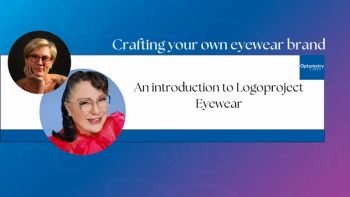
How your optical can save your practice come Oct. 1
The ICD-10 implementation deadline is nearly upon us-but did you know that you may experience a three-to-six-month delay in payments from insurance companies?
Las Vegas-The ICD-10 implementation deadline is nearly upon us-but did you know that you may experience a three-to-six-month delay in payments from insurance companies?
“We have to be ready to rollout October 1, but they have no obligation to be ready to pay us October 1. Ask yourself, what if all your insurance money dropped October 1?” says Sharon Carter, ABO, NCLE. “If you’re making zero money in your optical, where does that leave your practice? Broke.”
Related:
Carter has more than 20 years of experience in optometric practices and founded Eye Care Optometric Consulting.
In order for your practice to survive the ICD-10 transition over the next few months, Carter says eyecare practices should look to their opticals to fill the revenue gap.
“When I walk in as a consultant, usually, 30 percent of a practice’s money comes from optical, and 10 percent is coming from contact lenses,” Carter says. “You know what that tells me? The doctor is working his butt off, and someone is not performing in the optical.”
She says that optical should account for 60 to 70 percent of a practice’s income, and it should be one of the most important areas of your practice because the amount of money you can make there is unlimited.
Start setting goals
Carter says your optical should always have a goal for everyone in the office to buy into and work toward. She says that once she began setting goals, her practice made an extra $100,000 in a three-month period.
“And then all of a sudden, you’ve got all of this collective energy working toward this one goal-and you’ll reach it,” she says.
She cautions against making it a competition among staff. Instead, she says it’s about working as a team and each member performing at her own personal best.
Refresh your optical
You can set all the goals you want, but if your optical doesn’t make a good first impression to your customers, you might not get far.
“Why don’t you have a killer optical? You’re killing them, but not in a good way,” Carter says. “If you walk into an optical that looks like it’s straight out of the 1990s, what do you think their frames are going to look like? Old, dated. It’s going to be hard to believe that the optical has high-tech lenses and fashionable frames when they’re sitting in 1990s décor.”
She says that your optical should be clean, bright, and free of clutter. Your points of interest should be up to date (contact your rep if you need new ones), and all of your frames should be on a board or on risers.
And you have to keep the décor modern. Carter recommends an optical makeover every three to five years. If it’s been a while since you’ve updated, it may be time for a new coat of paint, modern furniture, and a lighting change to freshen things up.
“We hire an interior designer to help us get a look that is easily changeable,” she says.
Know your product
Every member of your team should know the products your practice offers and know how to sell them to patients. Everyone from the front desk staff, the tech, the doctor, and the optician should be working together to make sure the patient’s needs are met.
Your practice should be offering the latest and greatest in lens and frame technology. Your patients are looking for the best option to suit their vision needs.
“Some of your practices are still offering 50-year-old progressive technology,” Carter says. “If we let people know about digital lenses and what they would offer, patients would be standing at our doorsteps at midnight, waiting on us to open up, just like they do for the new iPhone.”
Both staff and doctors are often guilty of prejudging a patient and won’t offer him the very best because they think the patient can’t afford it. Stop assuming your patients “won’t buy” premium products-and multiples of them. That goes for premium lenses, sunglasses, computer glasses, and more.
“What I hear all the time is, ‘People here don’t buy that.’ Let me translate that into English for you. That means, ‘I can’t sell it,’” Carter says.
And make sure every patient is walking out with a new pair of glasses-even those who purchase contact lenses. Carter points out that nearly all contact lens wearers tend to misuse their lenses through overwear or improper lens care, and that means they are putting themselves at risk. Every contact lens wearer should have a pair of glasses as backup so they don’t stick that dirty, old lens back on their eye.
How to spread the word
Once you’ve got an outstanding optical with the best services, it’s time to let people know. Carter says there are a number of options for marketing your practice’s optical services:
• Newspapers. Carter says that advertising in newspapers can be more expensive than a printed mailer, but if you do decide to advertise, choose a newspaper and a time-such as a weekend-that will grant you the most exposure.
If you practice in a small town, Carter jokes, choose to advertise in the issue that features the list of marriages, divorces, and property purchases.
“They sell three times more papers that day because in a small town, you’ve got nothing to do but mind other people’s business,” she says.
Related:
• Radio. Radio is often even more expensive than newspapers. Choose a station that will reach your target audience and advertise during a popular time slot, such as morning or evening rush hour.
• Television. Television advertisements are the most expensive of them all, so use them wisely. Carter recommends using these ads when you are promoting special events, such as back to school, trunk shows, or grand openings.
• Online. Today, most people use the Internet to do research. Carter says you need to be aware of your practice’s online reputation on review sites like Google or Yelp.
Related:
• Facebook. By now, you should know that your practice needs a Facebook page. But it’s not enough to just have one-Carter says you should post at least two times a week. She recommends keeping it light-hearted and fun. This is a great opportunity to show off your optical offerings.
• Website. Just like Facebook, it’s not enough to just have a practice website-you need to make sure it looks good! An ugly, outdated website is going to stand out for all the wrong reasons.
Carter recommends keeping it clean and simple and having pictures and information about the doctors and staff.
Newsletter
Want more insights like this? Subscribe to Optometry Times and get clinical pearls and practice tips delivered straight to your inbox.














































.png)


